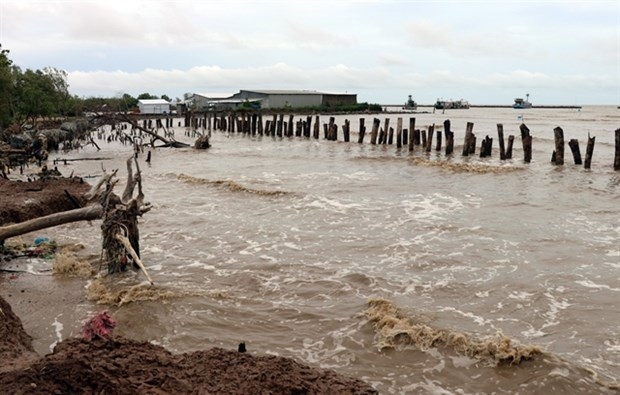Lying on Sao mountain and standing 200m above the sea level, Hang Sao pagoda is located in Sao village, Tan Lap commune, Luc Yen district, northern Yen Bai province.
Locals call it Sao pagoda, after the name of a hamlet in Nhan Muc village. The facility derives its name from the birds that build their nests inside the cave.
Legend has it that the cave was discovered in the reign of the sixth Hung King who, finding the beauty of the landscape, decided to bury the remains of his mother inside the cave. A king of the early Le dynasty named it the “herb fragrance cave”.
Hang Sao pagoda rests on the Phu Sa Phin mountain range which was form about 540 million years ago. It is one of the beautiful and sacred pagodas in Yen Ban.
Hang Sao Pagoda was first built by Tay locals in the 13th-14th century to worship Buddha.
History goes that a local young lady named Vu Thi Ngoc Anh was placed in charge of military logistics by a Le king. She directed Tay locals to reclaim waste land, taught them on how to cultivate water rice, and turned Hang Sao into a store.
In the Nguyen dynasty, Sao villagers added a small pagoda to the cave to worship both the Buddha and Vu Thi Ngoc Anh herself.
Hang Sao pagoda has its gate facing the northeast, almost parallel to the left bank of Chay river, about 500m from the flow. The complex consists of a natural pagoda (Sao pagoda) and another built by human (Hang pagoda).
Sao pagoda is 100m from Hang pagoda, and now only its base remains within the premise of the primary school of Tan Lap commune. It has deformed and become impossible to precisely locate the lines of pillar bases while the surface layer of the earth contains many pieces of roofing tiles which are similar to those found at the communal house of Sao village.
Hang Sao pagoda is a natural one, used for long by locals as a worshipping place, and divided into three ones: lower, middle and upper pagodas.
The lower consists of a rough rock roof, about 10 square metres large and 5 metres deep, with a rock altar in the middle.
The middle is a vertical rock cliff connected to the lower by a lane sneaking the rock walls.
The upper is the largest, divided into two parts: upper cave and lower cave. The upper cave has a relatively level foundation with a connection to the sky, measuring 32m in length, 38m in width, and 15-18m to the roof of the cave, covering a total of 1,216 square metres; while the lower is about 5m lower than the upper and covers a total of 1,738 square metres.
Many pieces of Vietnamese and Chinese ceramics of the 18th-19th century have been unearthed from the base of the cave. Various stalactites of strange and beautiful shapes and sizes hang from the ceiling of the cave.
In December 1949, Hang Sao pagoda in Tan Lap commune served as the venue for the second congress of the Party organisation of Luc Yen district.
The People’s Committee of Yen Bai province on September 17, 2009, issued Decision No. 1395/QD-UBMD, recognising the Hang Sao pagoda in Sao village, Tan Lap commune, Luc Yen district, Yen Bai province as a historical-cultural relic of the provincial level./.

















